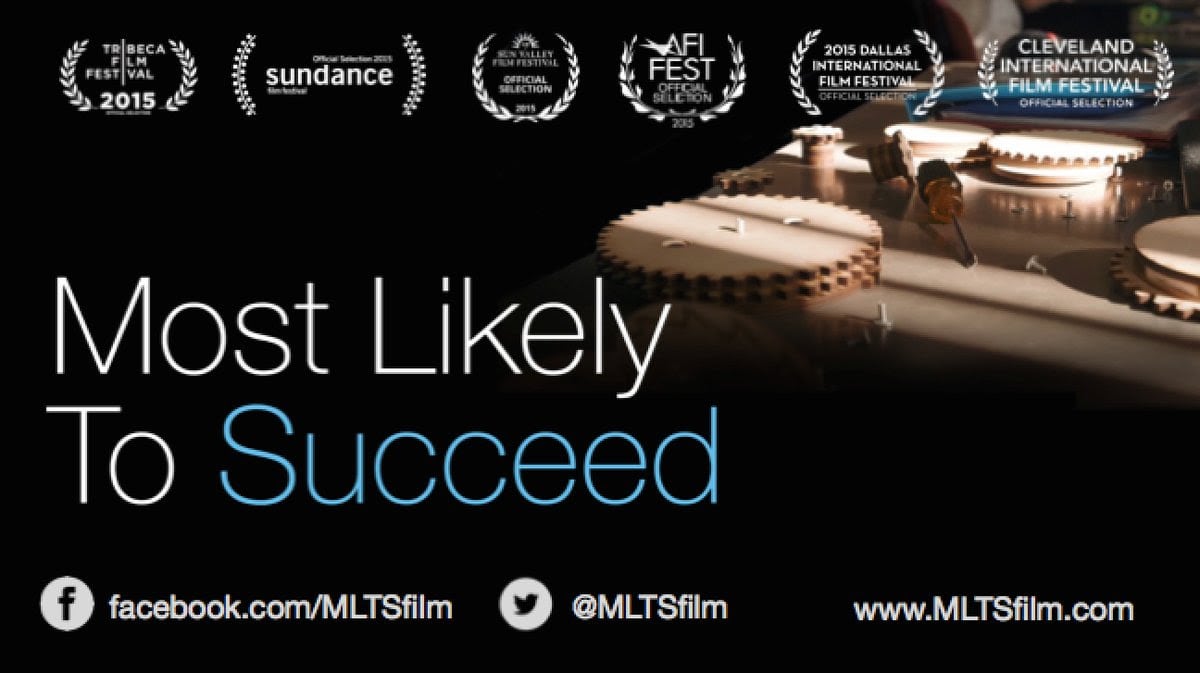A review and response to the documentary Most Likely to Succeed.
This past week our instructor had us watch the documentary Most Likely to Succeed, which poses some interesting questions about our current high school education system. The film follows the experiences of two ninth grade students enrolled at High Tech High—a public charter school in San Diego, California, that enlists an entirely new style of high school pedagogy. In contrast to the current system, a highly-structured model which was originally designed to produce able-bodied factory workers for a growing capitalist market, High Tech High presents a fluid curriculum aimed at generating capable innovators for the workplaces of tomorrow. Where most high schools rely on grades and testing to track student learning, this alternative strategy focusses on a single large project exhibition that blends course content with practical design skills and encourages student collaboration. The underlying assumption here is that, while High Tech High students may not cover as much content as traditional schools, the knowledge they do gain is longer lasting and more applicable to their future careers.
Upon reflection, I feel divided about this approach to pedagogy. While on principle I agree that the education system in North America needs to evolve alongside our advancing techno-globalized society, I question whether high schools should be spearheading this charge? One critique the film brought up, but never fully addressed, was whether graduates of High Tech High were successful in a university setting. True, High Tech High had a 98% admission rate into local colleges, but what was the pedigree of these institutions? Were the students able to get into the universities of their choice? If graduates of High Tech High were prevented from continuing with their academic training, was the unique learning style really worth it? Perhaps, these changes to our pedagogical system ought to begin from the top down, with universities shouldering the risk rather than vulnerable high school students.

Better yet, universities and high schools could collaborate on a complementary curriculum that considers the job market’s regional demands and creates a flexible pedagogy to suit those needs. This type of place-based learning would draw from the wisdom, goals and requirements of the local community and construct a flexible teaching style designed on a district to district basis. I think this regionally focused method of teaching and learning is the style I would like to employ in my future English classrooms. Residents of Victoria or the Lower Mainland, for example, have a special fluency in a number of multi-textual literacies specific to southern British Columbia. Educating students in these particular literacies—such as local narrative or oral literatures, but also more globalized technological literacies like webpage design—rather than focussing on the canon of British or American Literature, would increase their awareness of the needs and expectations specific to local industries and cultures.
Obviously, there are holes in this approach as well: What about students hoping to travel for their careers or settle down in another region, province, or country? Would they be equipped to start a new life in a location without the prerequisite regional training? Would this sort of style ultimately limit socioeconomic mobility and lead to hyper-specialization? These are the kinds of questions we should be asking with each stage of the West’s newly emerging curriculum—questions Most Likely to Succeed skillfully poses and answers with moderate success.





